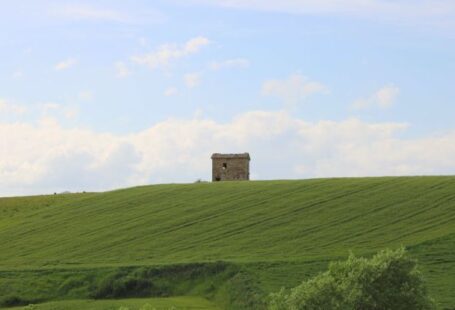Preserving the Past while Embracing the Future: Can Sustainable Initiatives Coexist with Rome’s Historical Legacy?
Rome, the eternal city, is a place where ancient history collides with modern innovation on a daily basis. From the iconic Colosseum to the bustling streets lined with Vespas, Rome’s historical legacy is palpable at every turn. However, in recent years, there has been a growing push towards sustainability and eco-conscious practices in the city. The question arises: can these sustainable initiatives coexist harmoniously with Rome’s rich historical past?
**Preserving the Past**
The historical significance of Rome cannot be understated. As a city that has been continuously inhabited for over 2,800 years, Rome is a treasure trove of ancient ruins, monuments, and artifacts that provide a window into the past. Preserving these historical sites is not only important for maintaining Rome’s cultural heritage but also for attracting tourists from around the world.
One of the biggest challenges in implementing sustainable initiatives in Rome is striking a balance between modern development and historical preservation. Many of Rome’s historical sites are fragile and sensitive to environmental changes, making it crucial to find ways to reduce the city’s carbon footprint without compromising the integrity of these ancient structures.
**Sustainable Solutions**
Despite these challenges, Rome has made significant strides in recent years towards becoming a more sustainable city. The city has implemented initiatives to reduce air pollution, increase recycling efforts, and promote green spaces within the urban landscape. Additionally, there has been a push towards sustainable transportation options, such as electric buses and bike-sharing programs, to reduce the city’s reliance on fossil fuels.
One notable example of sustainable innovation in Rome is the restoration of the Mausoleum of Augustus, an ancient tomb that has been closed to the public for decades. The restoration project aims to transform the site into a cultural and environmental hub, complete with a rooftop garden and solar panels to generate renewable energy. This project not only preserves a historical landmark but also integrates sustainable practices into the city’s infrastructure.
**Challenges and Opportunities**
While Rome’s historical legacy presents unique challenges for implementing sustainable initiatives, it also offers opportunities for creative solutions. By leveraging the city’s rich cultural heritage, sustainable projects in Rome can serve as a model for other cities seeking to balance preservation with progress.
One key aspect of integrating sustainability into Rome’s historical legacy is community engagement. Local residents, businesses, and policymakers must work together to ensure that sustainable initiatives are implemented in a way that respects the city’s history and aligns with the needs of its inhabitants. By fostering a sense of collective responsibility for both the past and the future, Rome can pave the way for a more sustainable and resilient city.
**Embracing the Future**
As Rome continues to evolve as a modern metropolis, the challenge of preserving its historical legacy while embracing sustainable practices will remain a constant balancing act. However, by viewing sustainability not as a hindrance but as an opportunity to enhance the city’s cultural heritage, Rome can create a future that is both environmentally conscious and historically rich.
In conclusion, the coexistence of sustainable initiatives with Rome’s historical legacy is not only possible but essential for the city’s long-term viability. By preserving the past, embracing the future, and finding innovative solutions to complex challenges, Rome can continue to thrive as a beacon of history and sustainability for generations to come.





